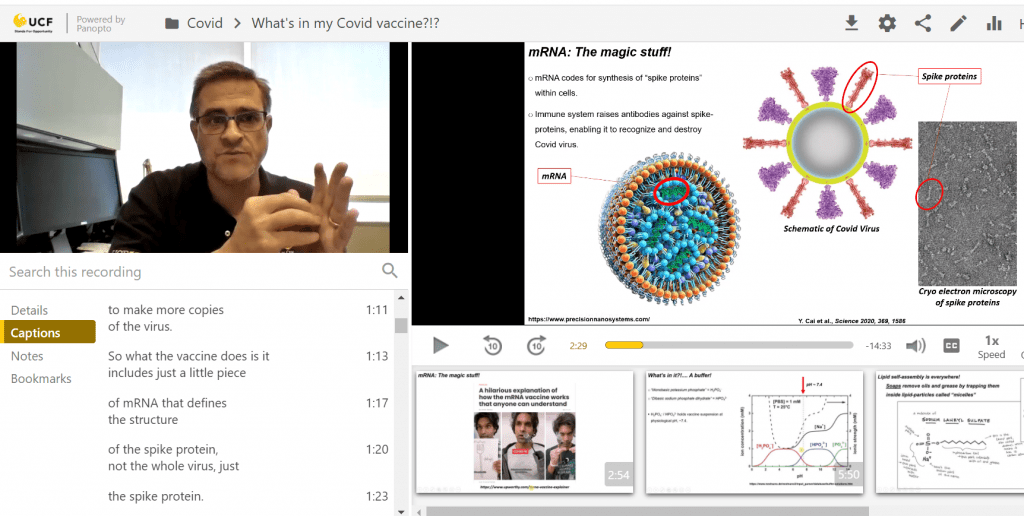Chemistry Professor Breaks Down Vaccine Mystery With Ingredient Explanation

A screenshot from a lesson prepared by Professor Stephen Kuebler on the basic ingredients of the Pfizer COVID vaccine.
Mistrust of the COVID-19 vaccine is rooted partly in its rapid introduction, the seemingly new technologies involved and the long list of ingredients with mysterious names like “N-ditetradecylacetamide.”
But the purpose behind “monobasic potassium phosphate” in the vaccine can be understood with chemistry principles UCF students learn all the time, according to Professor of Chemistry and Optics and Photonics Stephen Kuebler, Ph.D. The opportunity to share those chemistry principles is why Kuebler chose an academic career.
“Knowledge has value on its own, but it’s most valuable when shared and used for good,” he said.
Kuebler updated his teaching materials for Spring 2021 to help students understand how the chemistry they learn explains the structure of the COVID virus, how the Pfizer vaccine works and the role of its ingredients. He explains:
- mRNA is the active ingredient of the vaccine. It provides instructions to our body on how to create an immune response. The other ingredients are for delivering the mRNA effectively.
- Monobasic potassium phosphate (KH2PO4) — This is a buffer commonly used in many vaccines and drugs to balance pH to our body.
- ((4-hydroxybutyl)azanediyl)bis(hexane-6,1-diyl)bis(2-hexyldecanoate) – This is one of several lipids found in the vaccine that create fatty nanoparticles that act like gift wrap to protect the mRNA and help deliver it into cells. Lipids and related fatty and oil-based molecules are found in many drugs and foods like mayonnaise and whipped cream.
- Sodium chloride and potassium chloride – These salts help match the electrolyte balance in our body.
- Sucrose (common sugar) – Sucrose maintains the vaccine’s structure during the freezing process. (Freezing expands and breaks cells; think of your lettuce going bad in the back of your refrigerator.)
Kuebler adds: “Many of the technologies associated with the Pfizer vaccine are not really that new. mRNA-based vaccines have been under development since the mid-90s and lipid-nanoparticles have been used in FDA-approved drugs since 1996.”
Kuebler emphasizes the importance of overcoming the disconnect and current public mistrust surrounding science with clear, understandable explanations.
“It’s important to bring in the humanities to science,” he said.
